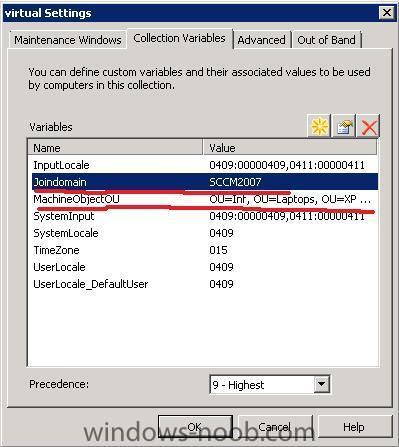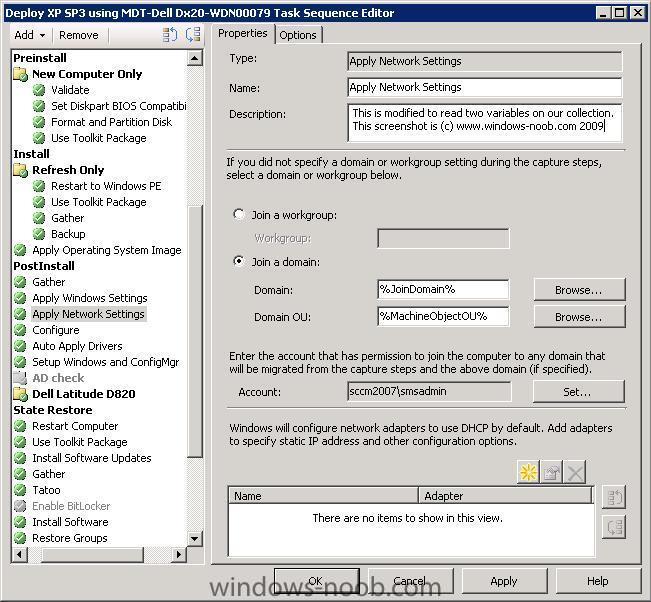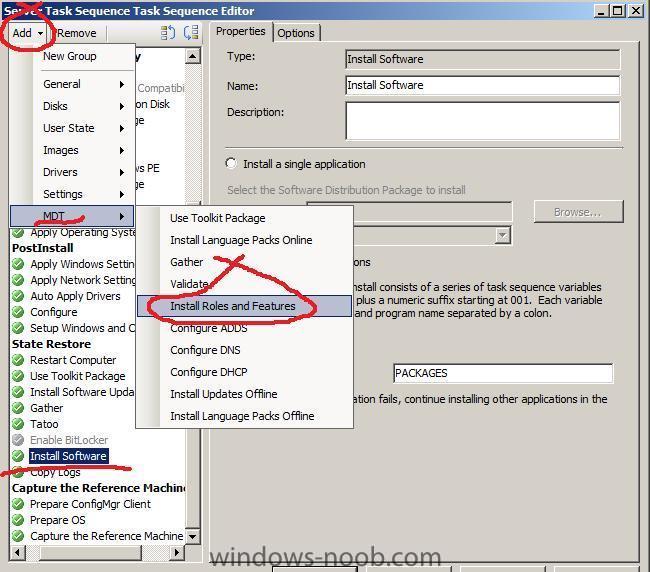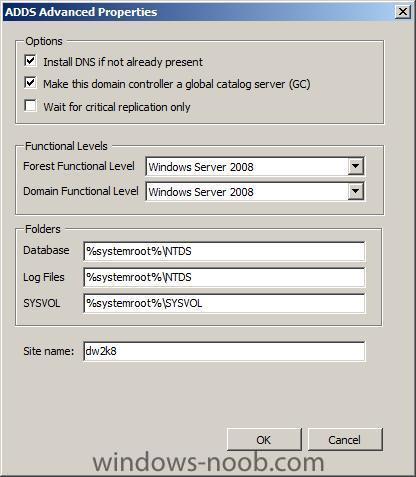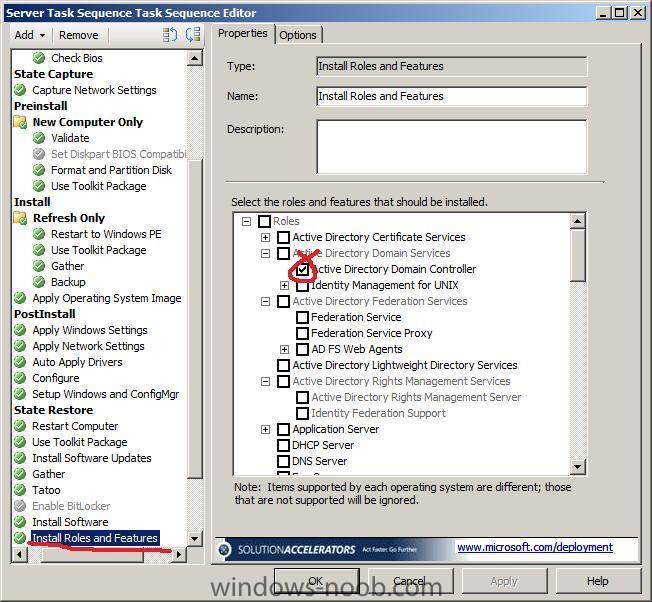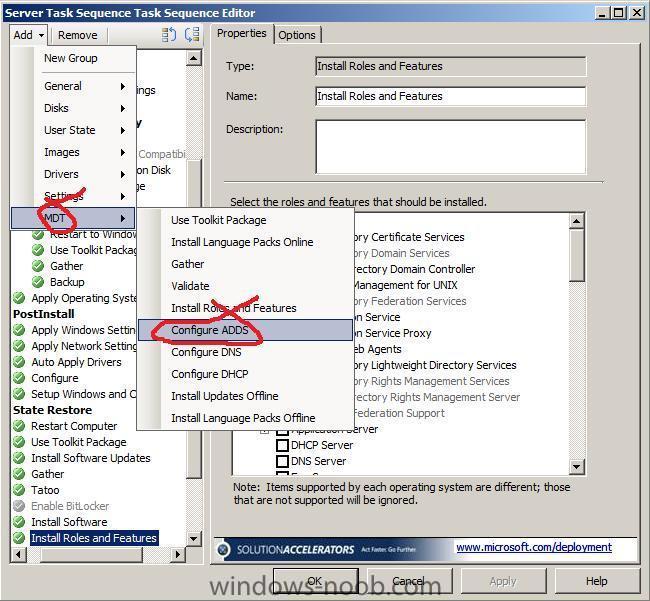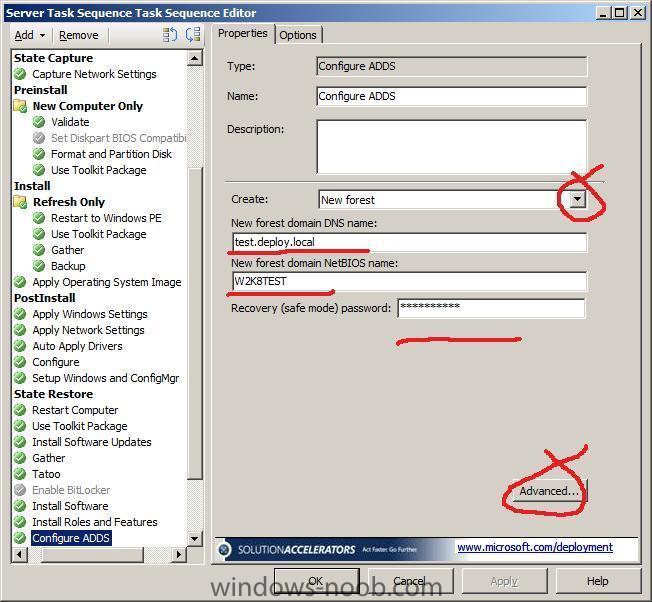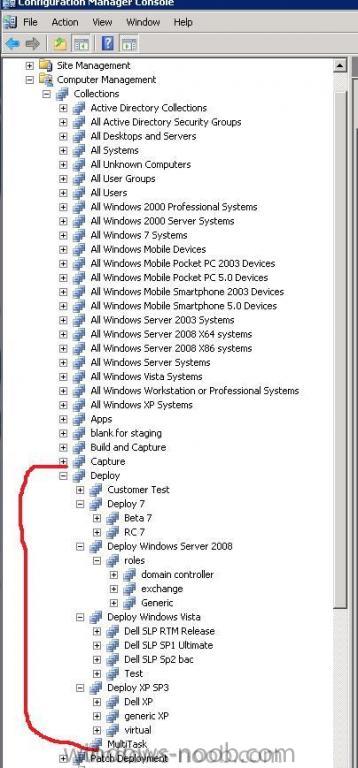-
Posts
9247 -
Joined
-
Last visited
-
Days Won
369
Everything posted by anyweb
-

Join domain depending on computername
anyweb replied to ::_Christian_::'s question in Troubleshooting, Tools, Hints and Tips
the regional and language settings are used as follows create a blank (or edit existing) sysprep.inf file with the following lines in it then create a sysprep package of the above file and add it to your task sequence, if you use MDT integration in SCCm you can use ztigather and zticonfigure scripts in the TS and they will poke the correct values you set on the collection variables into your sysprep.inf during deployment try it and post your results here -

wait time for Client to show up as YES in your collections
anyweb replied to lark2056's topic in Configuration Manager 2007
initiate a Data Discovery Cycle on the client and then refresh the collection in configmgr 10 minutes later any change ? -
Windows 7 will be released October 22, and the pricing information for both the full and upgrade versions have been known for a while. However, as most of us geeks will know, there's a third variant you can buy, apart from upgrades and full versions: OEM or system builder releases. NewEgg has leaked the pricing information for these releases too. In stores in the western world, you'll be confronted with three Windows versions: Home Premium, Professional, and Ultimate (although that last version might be hard to come by). NewEgg has published the pricing information for all OEM variants of those three versions. Putting all the three price variants together for the three versions (get it?), results in the following table (as far as I can tell, these prices go for both the 32bit and 64bit versions): more > http://www.osnews.com/story/22265/Windows_7_OEM_Prices_Revealed
-
in an enterprise that would'nt be an option, but feel free to create a guide for doing it, and share it with us here
-
don't delete it, who installed this SCCM server ? was it someone else ? do you have any documentation for this server ?
-
you say it shows under site system status, is that the status of the parent site and perhaps that site has the psp role installed >?
-
under site systems,click on your servername you will see the roles listed on the right side, do you see ConfigMgr PXE Service Point listed ? if so the PSP role is installed (it is required for OSD) to remove the role, right click on it and choose Delete.
-

Join domain depending on computername
anyweb replied to ::_Christian_::'s question in Troubleshooting, Tools, Hints and Tips
good question, in my suggestion below I am not using the computername to decide where the computer shall be placed but by using collection variables, perhaps someone with a VBS script that does domain OU joining based on computername can chirp in, you could use computer variables (right click on the computer in the collection and set a variable called JoinDomain=DOMAIN or similar or you could use collection variables to apply to all computers in that collection, to do this, simply right click on your deploy collection and choose Modify collection settings, here is an example of two variables on a collection Set the following Collection variables to something like this... then edit your Task Sequence to use the variables like so does this help ? TIP: to verify that your Collection Variables are indeed being passed through to your task sequence bring up a command prompt in WinPE and use TSENV2 to list the variables eg: tsenv2 list > variables.txt you can then review the variables.txt file to find your collection variables -

how can I configure SCCM 2007 in Windows Server 2008 - Part 2
anyweb replied to anyweb's topic in Configuration Manager 2007
have a read of this and see does it help -
on 64bit systems in the control panel, click on the View 32 bit items icon to see the configmgr client icons cheers niall
-
Microsoft have released their free anti-virus and anti-malware software (codenamed 'Morro') to the public, under the name of 'Microsoft Security Essentials'. Microsoft's intent to release free anti-virus software has been known for as long ago as 2004 when Microsoft bought out GeCad and Pelican Software. Microsoft also purchased Giant Antispyware (which was generally considered to be a good product at the time) and later became Windows Defender, as well as being built into Windows Vista by default. Microsoft previously had Windows Live OneCare, a paid subscription security suite including extras like parental controls and photo backup, but discontinued the product possibly due to user and industry-wide criticism of the product, and that Morro was already on the horizon. more > http://www.osnews.com/story/22255/Microsoft_Security_Essentials_Released you can download the files here: Windows XP 32‐bit: mssefullinstall-x86fre-en-us-xp.exe Windows Vista/WIN7 32‐bit: mssefullinstall-x86fre-en-us-vista-win7.exe Windows Vista/WIN7 64‐bit: mssefullinstall-amd64fre-en-us-vista-win7.exe
-
yes that should be no problem, however the OS won't be upgraded, but rather a new install of Windows 7 will be carried out after optionally backing up your DATA using sccm
-
i think they did copy and paste, the SQL data itself would only give them the DATA and not the screenshots, but of course i could be wrong, there is nothing on the server to indicate a sql injection or other attack/hack the server hosting this is running centos/apache/mysql/php
-
thanks Peter, can you recommend any software that I could use to watermark all the images, they are contained in multiple folders on the server I just want to be able to point the software to the folder and let it update all images found I hate doing this, but I hate getting the site ripped off even more
-
oh yes, we all now know that you are an admin on certcollection.org
-
hi all, unfortunately a website out there has ripped off (and without permission) pretty much ALL of the content (including the layout) of windows-noob.com and is using it on their 'forums' with no link back to here and is effectively claiming it as their content even though some of the 'guides' contain screenshots of windows-noob.* address's. One of the two people who carried this out was a young Saudi Arabian called 'Kane Bagwell' from the same site and his accomplice The_Last_Remnant. Because of this extreme lameness I am now left with the possibility that this will keep on happening so I'm pondering how to deal with it, do I protect all screenshots on the forum with a www.windows-noob.com logo on them or use some other form of protection ? I am open to ideas and suggestions so please give me your opinion on this cheers niall
-
i'm not following you.... wds will deploy (or capture) an os and thats about it, with mdt and wds you can use task sequences and some apps (lite touch) but what you want to do is to upgrade an os from vista to 7 via wds ? how are you thinking here exactly ?
-

how can I install SCCM 2007 in Windows Server 2008
anyweb replied to anyweb's topic in Configuration Manager 2007
ok that is only for upgrading an existing SCCM 2007 installation see > http://www.microsoft.com/Downloads/details.aspx?FamilyID=5aae62e8-4b7f-4af7-be01-aefaa4bf059a&displaylang=en assuming that you are trying to install SCCM 2007 sp1 for the first time., you need to download and install the following from technet/msdn System Center Configuration Manager 2007 with Service Pack 1 (x86) - DVD (English) the ISO is called en_system_center_configuration_manager_2007_with_service_pack_1_x86_dvd_x14-66461.iso do you see that file anywhere ??? the numbers after dvd_ may be different for you... -

how can I install SCCM 2007 in Windows Server 2008
anyweb replied to anyweb's topic in Configuration Manager 2007
what SCCM iso did you download from msdn/technet ? what is the filename ? -

how can I install SCCM 2007 in Windows Server 2008
anyweb replied to anyweb's topic in Configuration Manager 2007
looks like you are using the upgrade media from your screenshot.... try using the correct media for installing sccm 2007 sp1 -
do you mean using SCCM ? if so yes, but that would be by using a task sequence in the OSD section of SCCM
-
let me test it here.... ok not working for me either, now i just need to figure out why.....
-

how can I deploy Windows Server 2008 using SCCM 2007 sp1
anyweb replied to anyweb's question in Deploy Server 2008
Adding Server Roles and Features With the Microsoft Deployment Toolkit installed and MDT integration added to SCCM you are also given the opportunity to install and configure server roles and features. Note: There is a bug in MDT 2008 when adding roles and features to Windows Server 2008 64bit, they won't get executed at all unless you perform the following workaround. If you are deploying Windows Server 2008 X86 however, continue below as normal:- In the Task Sequence, select State Restore in the left pane, and highlight Install Software. Click on the Add drop down menu at the top of the Task Sequence, and select MDT from the choices available, then select Install Roles and Features. Note:If the MDT section does not appear then you most likely have not added Microsoft Desktop Toolkit integration to SCCM 2007. In the example below we will configure our Task Sequence to make this Windows Server 2008 an Active Directory Domain Controller. In the Task Sequence, select Active Directory domain controller, click Apply when done Now that they are added, you will want to configure them, so lets configure Active directory domain services first by clicking on the Add drop down menu followed by MDT and then Configure ADDS. enter your choices from those available and note that the drop down menu (which has Forest pre-selected) will decide what options are available to you depending on what you pick. If you want to configure where to store the AD database, logfiles and sysvol and other advanced options then click on the Advanced button. click Apply when done and then click Ok to exit from editing the Task Sequence. Continue on to the next Part >> -
why would you run the advertisement again ? assuming you want to deploy an OS to some computers then start using Deployment collections that have task sequences permanently advertised to them something like this, then when you need computers imaged you add them to the relevant deploy collection and sccm takes care of the rest, no need to worry about them getting the advertisement twice as the advertisement program rerun behaviour is set to never rerun




